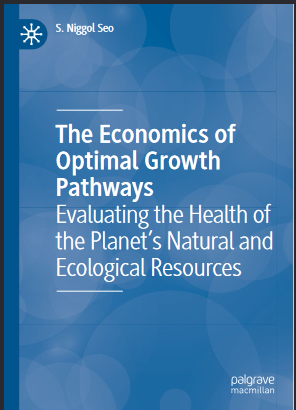

خرید و دانلود نسخه کامل کتاب The Economics of Optimal Growth Pathways Evaluating the Health of the Planet’s Natural and Ecological Resources – Original PDF
35,500 تومان قیمت اصلی 35,500 تومان بود.8,500 تومانقیمت فعلی 8,500 تومان است.
تعداد فروش: 52
Author:
S. Niggol Seo
13 on the best possible path. Economists would want to know how the national economy would select high-return projects and deselect low- return projects, as in the financial sector, in the economic system itself. Put differently, the economics of economic growth should explain how the capital in the economy is allocated within the system itself away from lower return projects to higher return projects, both private and public. 1.4 an optImal economIc Growth pathway for the natIon Having considered the economic decisions in managing the vital natural resources and financial assets, can we conclude that a national economy or a global economy should be managed with the same decision rules and the objectives? Further, is it possible to conceptualize the “optimal” growth pathway of the economy as a whole? Even further, is there an optimal growth pathway of the economy that can be measured as an optimal rate of growth in each time period? From a critic’s perspective, these questions can be stated alternatively as follows. Are the national economy’s evolvements subject to completely different decision rules and objectives from those applied in the afore- described individual sectors? Is there a need for continued economic growth at all? How can the economy’s performance be measured given many unmeasurable things in people’s lives and nature’s wellbeing? Should the government then have a different set of priorities or objectives deter- mined by itself from the priorities determined in the market sectors? To begin with in disentangling these questions, it can be recognized that a theory of economic growth needs to encompass more than a size of capital accumulation or a determination of a national savings rate (Paul Romer 1990; Aghion and Howitt 2009; David Romer 2018; Seo 2022a). There are many ineluctable dynamics unfolding in a macroeconomy. In this regard, two such dynamics would immediately come to mind: popula- tion growth and technological growth (Solow 1957; Griliches 1979, 1998). The stock of human resources, also referred to as human capital, such as education and training is also a pivotal dynamic in the economy (Nelson 1959; Mankiw et al. 1992). The concept of capital, as defined by Irving Fisher, proves essential, perhaps indispensable, in the conceptualizations of the nation’s economic growth (Fisher 1906; Solow 1957). The productions of the entire national 1 AN INTRODUCTION TO THE ECONOMICS OF OPTIMAL GROWTH… 14 economy can be measured simply as the new capital created in the econ- omy. The capital is then reinvested, excluding the capital set aside for con- sumption by its people, into new production activities. Therefore, the capital in this framework is also an input into the economy. If an economic growth theory should measure the progresses in the economy’s total production each year, the size of population and its growth is another essential variable, in addition to the capital. A change in population means a change in labor supply which is another input in the production function of the economy. To continue, a form of the national economy’s production function should be specified. It is quite common in the literature to adopt a Cobb- Douglas production function with a constant elasticity of output in response to each factor (Solow 1957). The specification of the production function reflects the economy’s technology at one point in time. It is the case that a new technology emerges in the economy once in a while, which largely alters the direction of the economy as well as its pro- ductivity. To mention just some of them, personal computers during the 1990s, internal combustion engines during the 1920s, or petroleum extractions and electricity generations during the late nineteenth century have fundamentally changed the growth path of the world economy (Nordhaus 1994b, 2007). Once these factors are well arranged into an economic model, we get to Robert Solow’s modern economic growth theory. Solow’s economic growth theory, which is explained in Chap. 9, was based on the economy’s production function with the above three factors: capital, labor, and tech- nology. In his model, a process of technological breakthroughs or growth is added exogenously, which is referred to as the Total Factor Productivity (TFP) in the literature. It is a model of capital accumulation because the capital stock is the output of the production function, which grows over time in pace with changes in the three inputs: capital, labor, and technol- ogy (Solow 1957). So, the Solow model is a recursive model, rather than an optimization model, which depicts a pathway for the economy. The pathway depends on the changes in the three inputs as well as assumed functional relation- ships and parameters in the model. It is a dynamic model, but notably not a societal welfare optimization model. The production function can be derived from the producer’s profit maximization problem, which means that Solow’s growth model is a supply-side theory of economic growth (Mas-Colell et al. 1995). S. N. SEO



نقد و بررسیها
هنوز بررسیای ثبت نشده است.